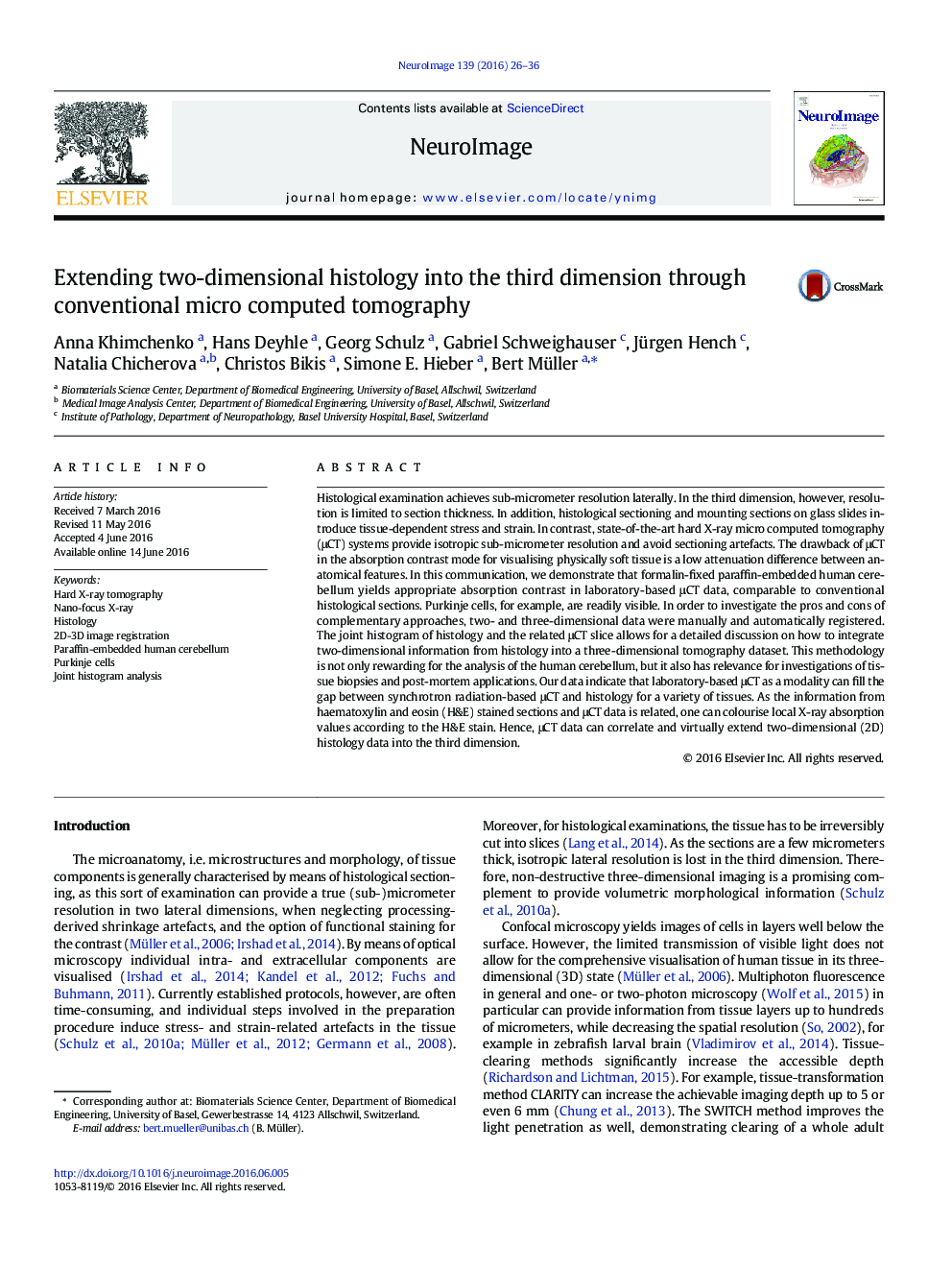| کد مقاله | کد نشریه | سال انتشار | مقاله انگلیسی | نسخه تمام متن |
|---|---|---|---|---|
| 6023395 | 1580869 | 2016 | 11 صفحه PDF | دانلود رایگان |
- Microanatomy of paraffin-embedded human cerebellum revealed by lab-based μCT.
- Three-dimensional visualisation of several thousand individual Purkinje cells without staining.
- Extension of histology into the third dimension using registration and joint histogram analysis.
- Virtual 3D histology combining μCT and selected H&E-stained histology slices.
Histological examination achieves sub-micrometer resolution laterally. In the third dimension, however, resolution is limited to section thickness. In addition, histological sectioning and mounting sections on glass slides introduce tissue-dependent stress and strain. In contrast, state-of-the-art hard X-ray micro computed tomography (μCT) systems provide isotropic sub-micrometer resolution and avoid sectioning artefacts. The drawback of μCT in the absorption contrast mode for visualising physically soft tissue is a low attenuation difference between anatomical features. In this communication, we demonstrate that formalin-fixed paraffin-embedded human cerebellum yields appropriate absorption contrast in laboratory-based μCT data, comparable to conventional histological sections. Purkinje cells, for example, are readily visible. In order to investigate the pros and cons of complementary approaches, two- and three-dimensional data were manually and automatically registered. The joint histogram of histology and the related μCT slice allows for a detailed discussion on how to integrate two-dimensional information from histology into a three-dimensional tomography dataset. This methodology is not only rewarding for the analysis of the human cerebellum, but it also has relevance for investigations of tissue biopsies and post-mortem applications. Our data indicate that laboratory-based μCT as a modality can fill the gap between synchrotron radiation-based μCT and histology for a variety of tissues. As the information from haematoxylin and eosin (H&E) stained sections and μCT data is related, one can colourise local X-ray absorption values according to the H&E stain. Hence, μCT data can correlate and virtually extend two-dimensional (2D) histology data into the third dimension.
452
Journal: NeuroImage - Volume 139, 1 October 2016, Pages 26-36
